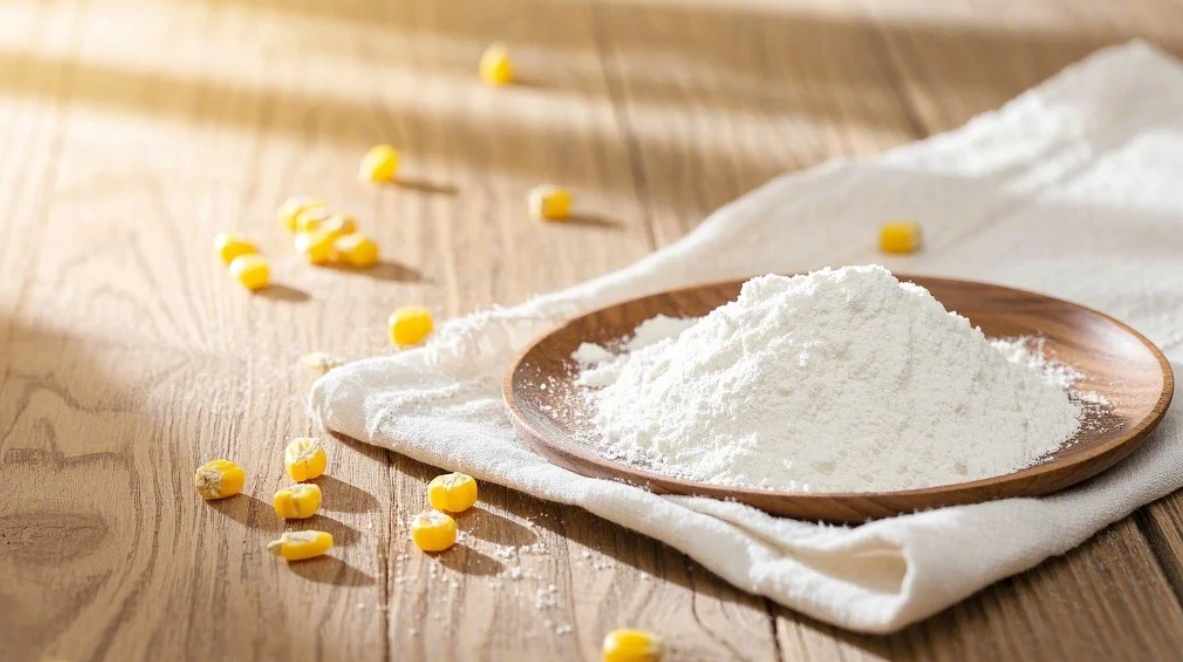The Clean Energy Revolution
In a world where consumers demand transparency and sustainability, organic maltodextrin is emerging as a hero ingredient for brands committed to clean-label innovation. Sourced from non-GMO crops like organic corn, tapioca, or potato, and produced without synthetic chemicals, this versatile carbohydrate is redefining functional foods, sports nutrition, and even pharmaceuticals. With the global organic maltodextrin market projected to grow at 8.5% CAGR through 2030 (Grand View Research), it’s time to explore how this once-overlooked ingredient is driving the future of health-conscious formulation.

1. What is Organic Maltodextrin?
1.1 The Science of Simplicity
Maltodextrin is a polysaccharide derived from starch through enzymatic hydrolysis. Its organic variant is crafted from non-GMO crops grown without synthetic pesticides, herbicides, or genetic modification. The result? A pure, plant-based carbohydrate with a neutral taste and exceptional functional properties.
1.2 Organic vs. Conventional: A Stark Contrast
| Criteria | Conventional Maltodextrin | Organic Maltodextrin |
|---|---|---|
| Raw Material | Often GMO corn, pesticide residues | Non-GMO, organic-certified crops |
| Processing | Chemical hydrolysis, synthetic additives | Enzymatic hydrolysis, no harsh chemicals |
| Purity | Risk of residual solvents | 99.9% pure, lab-tested for contaminants |
| Sustainability | High carbon footprint | Regenerative farming, zero-waste production |
Certifications: USDA Organic, EU Organic, Non-GMO Project Verified, Kosher/Halal.
2. Health & Functional Benefits
2.1 Gentle Energy for All Ages
- Low Osmolarity: Rapid digestion without gastrointestinal stress, ideal for infant formulas and medical nutrition.
- Steady Fuel Source: Glycemic Index (GI) of 85–105 provides quick energy for athletes and active lifestyles.
2.2 Texture & Stability Mastery
- Moisture Retention: Keeps plant-based meats juicy and gluten-free baked goods soft.
- Prebiotic Potential: Emerging studies suggest organic tapioca maltodextrin may support gut microbiota better than corn-based options (Food & Function, 2023).
2.3 Allergen-Free & Inclusive
- Gluten-free, vegan, and hypoallergenic—safe for sensitive populations.
3. Industry Applications: Where Organic Maltodextrin Shines
3.1 Sports & Active Nutrition
- Recovery Powders: Combines with plant proteins (pea, rice) to enhance amino acid absorption.
- Energy Gels: Neutral flavor and smooth texture outperform gritty alternatives.
3.2 Infant & Pediatric Nutrition
- Hypoallergenic Formulas: Easily digestible carb source for babies with lactose intolerance.
- Baby Food Texture: Prevents clumping in organic purees while adding mild sweetness.
3.3 Plant-Based Revolution
- Meat Alternatives: Retains moisture in pea-protein burgers, mimicking the juiciness of beef.
- Dairy-Free Cheeses: Improves meltability in organic cashew-based cheddar.
3.4 Functional Foods & Supplements
- Vitamin Encapsulation: Carries fat-soluble nutrients (e.g., vitamin D) in powdered blends.
- Low-Sugar Sauces: Thickens organic ketchup or BBQ sauce without added sugar.
4. Sustainability: From Farm to Facility
- Regenerative Agriculture: Organic farms increase soil organic matter by 15% over 5 years (Rodale Institute).
- Closed-Loop Production: Starch byproducts upcycled into biodegradable packaging or animal feed.
- Carbon-Neutral Goals: Leading suppliers offset emissions via reforestation partnerships.
5. How to Use: Pro Tips for Success
5.1 Formulation Guidelines
- Baking: Replace 10% flour with organic maltodextrin for softer gluten-free bread.
- Smoothies: Add 1–2 tsp to balance gritty plant proteins without altering flavor.
- Savory Blends: Mix with nutritional yeast for a “cheesy” texture in vegan sauces.
5.2 Storage & Handling
- Powder: Store in airtight containers at <60% humidity (shelf life: 18–24 months).
- Liquid Blends: Use within 48 hours to prevent microbial growth.
6. Success Stories: Brands Winning with Organic Maltodextrin
6.1 “PureStart” Organic Infant Formula
- Challenge: Develop a gentle, EU-compliant formula for colicky babies.
- Solution: Organic tapioca maltodextrin + hydrolyzed rice protein.
- Result: 90% reduction in parent-reported digestive issues.
6.2 “GreenBite” Plant-Based Jerky
- Innovation: Used organic maltodextrin to bind pea protein and retain moisture.
- Outcome: 200% increase in shelf life and “Best New Snack” at Expo East 2024.
7. The Future: Innovation Meets Ethics
- Precision Fermentation: Bioengineered organic maltodextrin from agricultural waste (pilot phase).
- Climate-Resilient Crops: Drought-tolerant organic cassava for stable supply chains.
Conclusion: The Neutral Hero of Clean-Label Nutrition
Organic maltodextrin is no longer just a filler—it’s a strategic choice for brands prioritizing purity, performance, and the planet. From stabilizing plant-based meats to fueling tiny tummies, this humble carbohydrate bridges the gap between science and sustainability. As consumers demand cleaner labels and greener practices, organic maltodextrin stands ready to redefine the future of food.